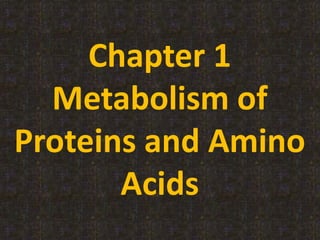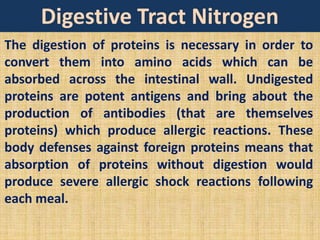The document provides background information on protein and amino acid metabolism. It discusses how proteins are composed of amino acids and their diverse functions in the body. The 20 common amino acids that serve as precursors for protein synthesis are described. Amino acids are classified as essential or nonessential. The document outlines the digestion of proteins into amino acids in the digestive tract and their absorption. It describes the pathways of amino acid catabolism including transamination, oxidative deamination, and the urea cycle for nitrogen removal. Defects in the urea cycle are also discussed.




![Introduction and background
At physiologic pH (approximately pH = 7.4) the carboxyl
group is dissociated, forming the negatively charged
carboxylate ion [-COO-], and the amino group is
protonated [-NH3+]
Structure of Amino Acids](https://image.slidesharecdn.com/chapter121-221001132423-7453cc68/85/chapter-1-2-1-pptx-5-320.jpg)




































